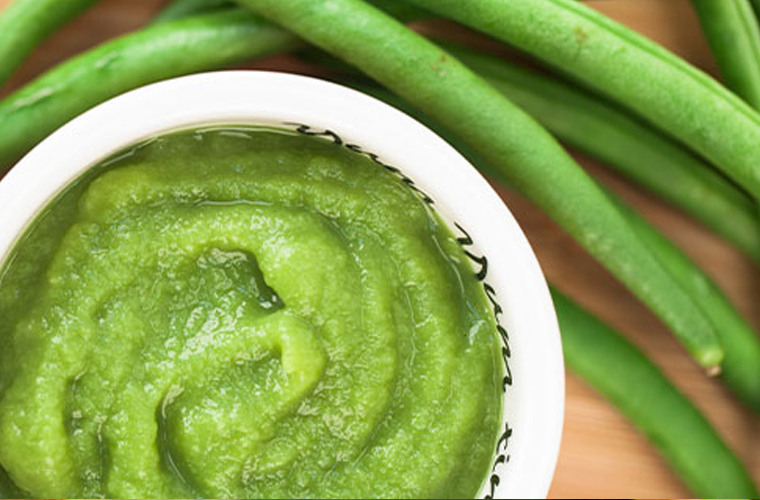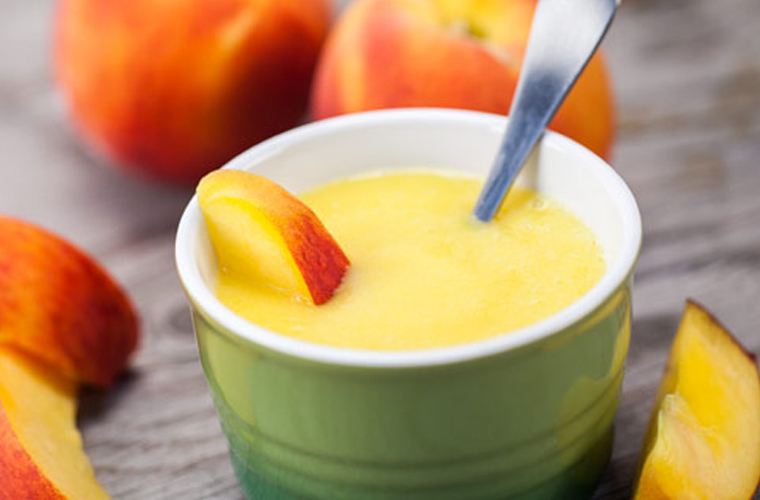These purees are for babies 6 months and older who are ready to start solids. Consult your pediatrician or general practitioner for specific nutritional requirements and guidelines.
Breastmilk and/or infant formula provide 100% of nutrition for infants until the age of 4-6 months when the baby is developmentally ready for solids. A baby is ready for solid (pureed) foods when he/she can sit up, reaches for foods and expresses interest in foods and is able to be fed with a spoon. Solid foods are meant to be given with a spoon so baby needs to be able to move food from the front of the mouth to the back of the mouth.
First foods typically include infant cereals (rice, oatmeal, etc.), pureed vegetables and fruits. Meats and beans are usually introduced once baby tolerates the fruits and veggies. Always start with purees as baby needs to learn the smoothest textures first in order to prevent choking and other possible complications, such as aspirating.
It is recommended to introduce one food at a time and watch for possible reaction to a food. Therefore, offer one food and provide the same food to the baby for 3 or so days in a row and then introduce a new food. Once a food has been determined “safe” for the child, then that food may be a regular part of the baby’s diet and mixed with other “safe foods.”
Baby Food Tips:
- Steaming is one of the best ways to prepare foods to preserve vitamins and minerals. Place the food in a steam basket or colander above boiling water to cook. Save any leftover water to add to purees while blending.
- Use ice cube trays to freeze pureed foods. Fill each cube with puree, just as if you were making ice cubes. Each cube should contain one ounce of food, approximately 2 tablespoons. When the tray is filled, cover with plastic wrap and freeze. Once frozen, pop out the cubes, store in a resealable container. It is best if food is used within one month.
- Many purees are suitable for freezing, except bananas, once they have been blended, do not freeze for later use.
- Home prepared baby food should be tightly covered and stored in the coldest part of the refrigerator for no longer than 2-3 days.
- Food should be thawed in the microwave, double boiler or refrigerator overnight.
- If the food is too thick, you can add breast milk, formula or a little water. If the food is too thin, you can add instant baby cereal or mashed banana.
- Do not add sugar or salt as you cook. Pure foods will help keep your baby from developing a taste for salty and sugary foods.
Baby Food Purees
2 cups steamed or baked vegetables:
- Sweet potatoes; baked, peeled and roughly chopped
- Butternut squash; baked, peeled and roughly chopped
- Carrots, yams or parsnips; steamed, peeled and roughly chopped
- Corn, peas or green beans; steamed
First Fruit Purees:
2 cups steamed fruits:
- Apples; peeled, cored and roughly chopped
- Pears; peeled, cored and roughly chopped
- Avocados; peeled and pitted
- Bananas; peeled
- Papaya; peeled and seeded
- Mango; peeled and pitted
- Apricots; peeled and pitted
- Peach; peeled and pitted
- Nectarine; peeled and pitted
Meat Purees:
2 cups boneless, cubed and cooked meat:
- Chicken
- Beef
- Pork
- Turkey
- Add liquid* along with vegetable, fruit or meat of choice to WildSide+ or FourSide jar and secure lid. (If using Twister jar, turn lid counterclockwise during blending.)
- Blend on a Medium to Medium-Low speed for 30-40 seconds.
- If mixture is too thick, remove vented gripper lid insert and add additional liquid through the vent opening.
- Continue blending until you reach desired consistency.
*The amount of liquid added depends on the tenderness and moisture content of the fruit and/or vegetable. The liquid can be water, formula or breast milk. To include some of the nutrients lost during steaming, use the cooking water when blending.
Here's 5 baby food recipes that combine multiple foods. You can also check out these homemade baby food recipes.




